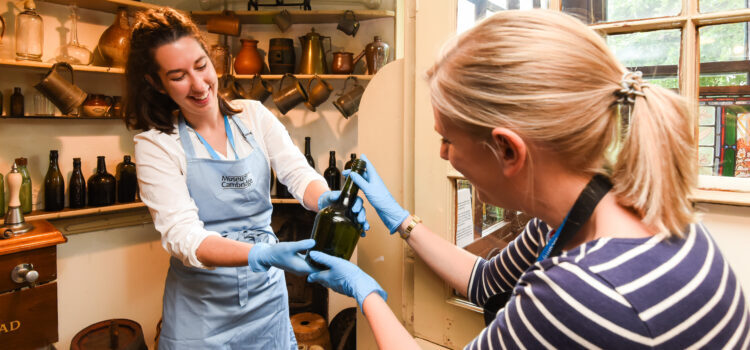As the proud custodians of 40,000 objects, we have a lot of work to do taking care of them all. Whether an item is 60 or 600 years old, they all come with unique challenges.
I’m Alex, the Museum of Cambridge’s Engagement Manager. I’m responsible for looking after our fantastic collection. Preventive conservation is the official term for how we care for our collections, which means we work to slow the deterioration of Museum objects.
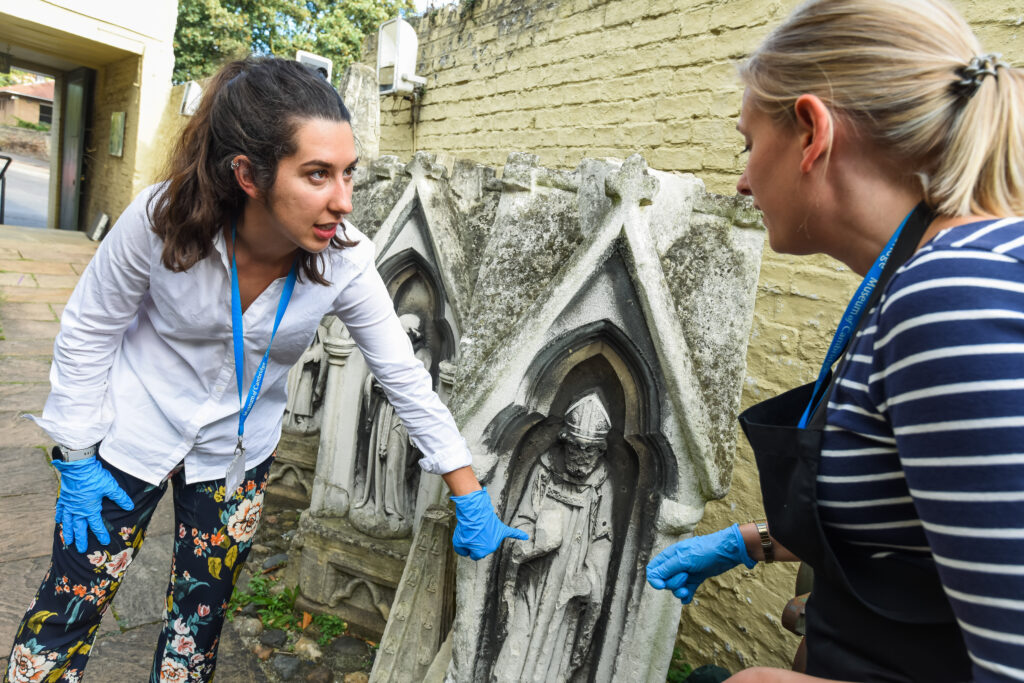
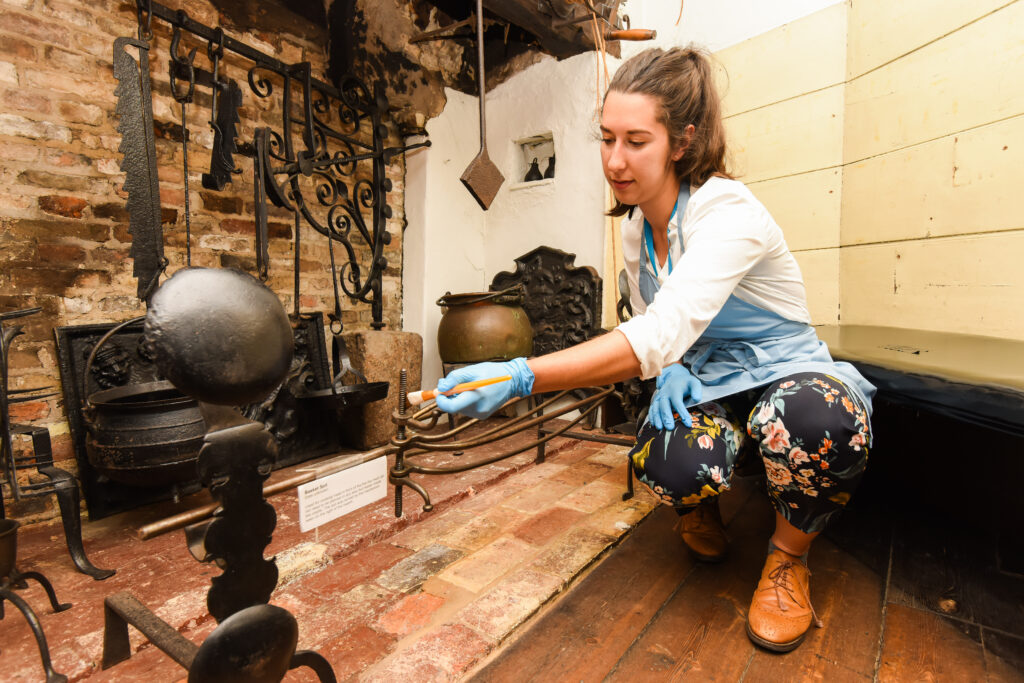
We can’t stop time (not even with the witchiest objects in our collection). Still, with care and the right attention, we can slow down its effects on our objects so that we can keep on telling their extraordinary stories for generations to come.
If you have ever noticed a treasured family album or favourite cuddly toy fading over the years? It is because time takes its toll on objects. We call the factors responsible “agents of deterioration.” These factors can lead to all sorts of damage to historic collections.
So, who are these “bad guys”?
*Light,
* Relative humidity,
* Temperature,
*Physical agents,
*Chemical agents,
*Biological agents (like pests and mould),
*Fire,
*Loss including theft,
*Water.
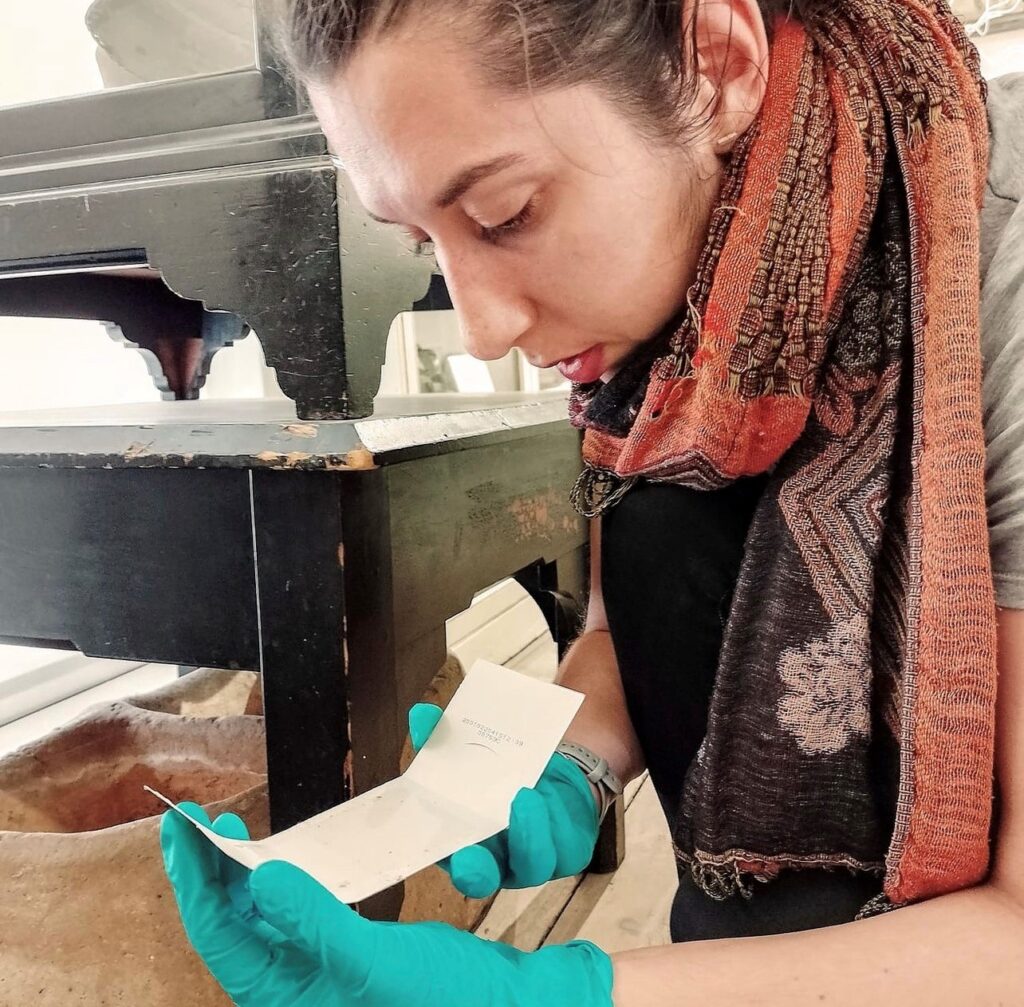
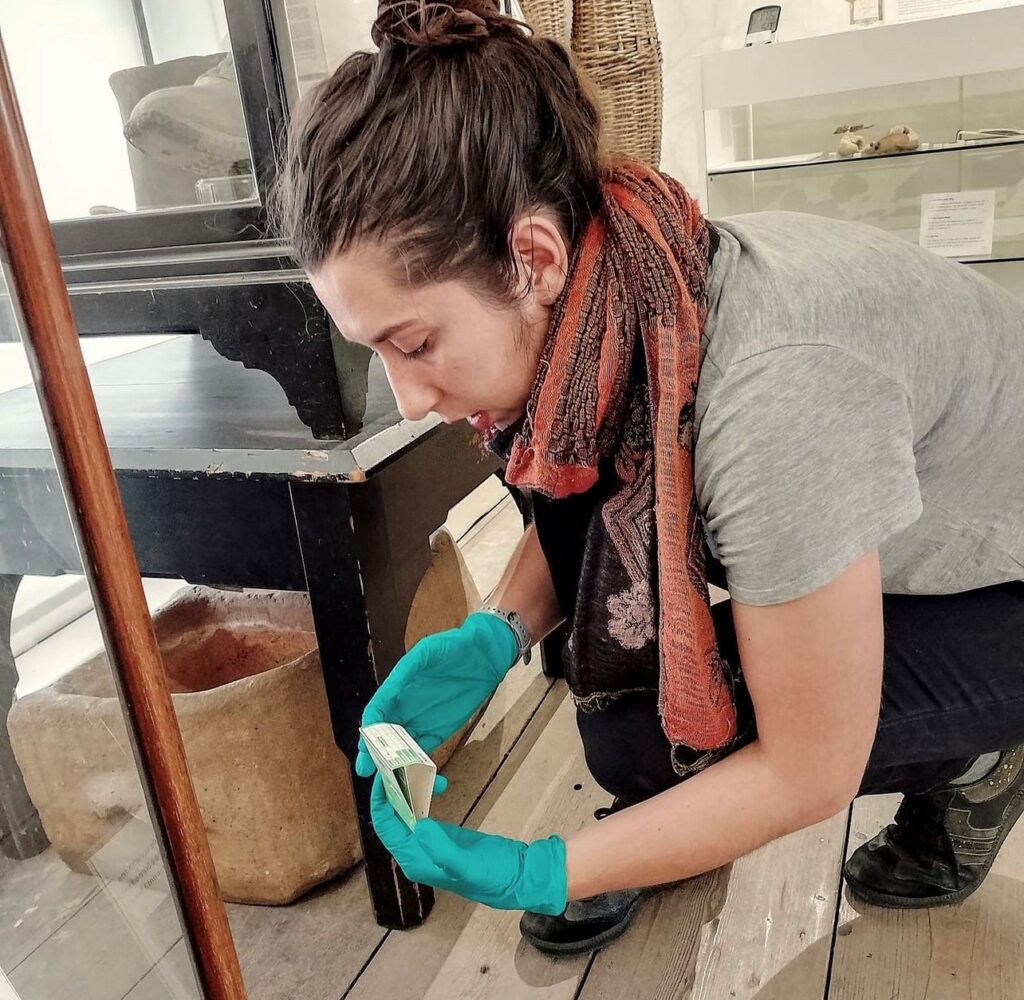
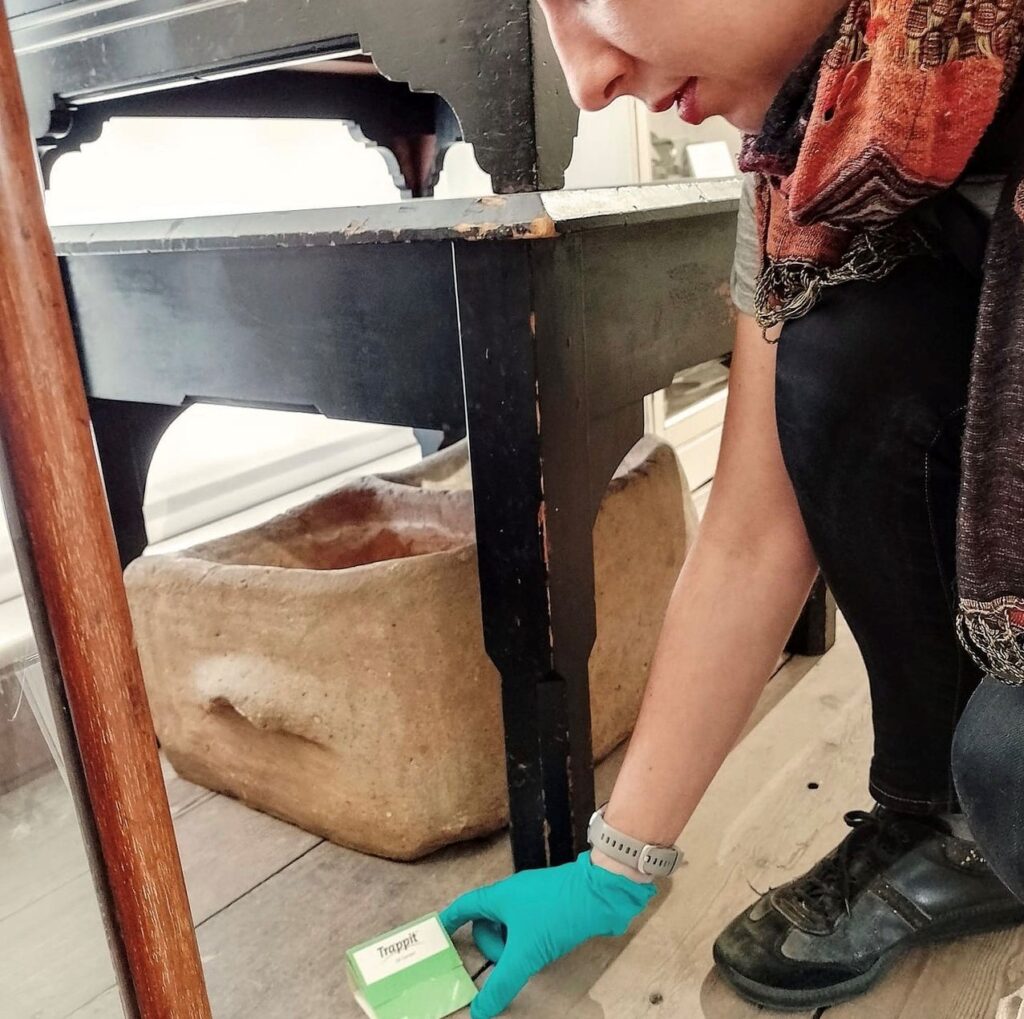
In this blog, we will share specifically about pest control at the Museum of Cambridge. Have you ever spotted any of these little green “boxes” tucked away in dark corners of the Museum? If so, you’ve got a keen eye, which is just what it takes to spot evidence of pest activity!
These are “blunder traps” with sticky pads to catch unsuspecting bugs that may blunder across them. Checking these traps regularly for creepy-crawlies may not be glamorous, but it’s very important to the well-being of all sorts of museum objects.
Pests, like clothes moths, furniture beetles, and woodworm are common insects that feed on the dust and debris of objects. Woodworms can live inside an object for many months until they bore a hole into the surface, alerting conservators to infestation. The best prevention of pests like moths and woodworms is to keep the environment clean. Dusting, vacuuming and keeping objects clean is the best way to protect them from infestation.
Even with our cleaning and prevention, Blunder traps help us proactively monitor which pests are lurking around, how many, and where. This allows us to detect early signs of an infestation and tackle it promptly using specialized approaches suitable for fragile historic objects.
There are many ways to support the Museum and allow this vital preventative conservation to continue. Click here for more information – Your support makes all the difference – The Museum of Cambridge
With your support our collections can keep telling their stories and showcasing the skills of Cambridge craftspeople for future generations to enjoy!
Next month more information on temperature and humidity. After last summer and this winter I’m sure you will appreciate these pose many challenges!
